Power outages have become more common, sparking an interest in investing in battery backup systems for homes. From different power stations available in the market, portable ones are more popular for their ease of use and transportability. Choosing the right one is crucial as it should fit exactly to your energy needs. Therefore, before buying one, you should understand your power needs first. To help you find the best of the lot, we have curated a list of the best portable power stations in 2025. Don’t forget to learn about the things that need consideration before investing in a portable power station.
Best Overall: Anker SOLIX F3800 – $2,600
Best Value: Pecron E1500LFP – $600
Best for Solar Charging: OUPES Mega 2 – $850
Best for Home Backup: EcoFlow Delta Pro Ultra – $2,500
Best With Swappable Batteries: Bluetti AC180T – $559
Most Lightweight: Jackery Explorer 1000 V2 – $450
Best for Fast Charging: DJI Power 2000 – $1,100
Best Budget-Friendly: EcoFlow RIVER 2 – $200
Things to Consider Before Buying Portable Power Station for Home
Regardless of what you are buying, you should always do a thorough research into the key factors that will make that purchase worthwhile. For instance, you need to consider the components you are looking for in a portable power station before you shell out your hard-earned money. The following are the things you should look for.
Power Capacity
When picking a power station, you need to understand two things: the continuous wattage and the total energy capacity (watt-hours). Watts show how much power a device uses at one time, while watt-hours tell you how much energy it uses over a period. As explained on a Reddit sub, a 100-watt device running for 10 hours and a 1000-watt device running for 1 hour both use 1000 watt-hours. Knowing these numbers helps you choose a power station that can handle your devices and how long you want to run them. You have to opt for a higher-capacity unit if you need to power appliances for extended periods or multiple high-consumption devices.
Output Options and Device Compatibility
It is important to check the types of ports and outlets the power station provides. Some units offer AC outlets, USB-A and USB-C ports, DC carports, or even wireless charging pads. Make sure the station can handle all the devices you plan to power, such as refrigerators or medical equipment that needs a pure sine wave AC outlet, which is something not all models include.
Portability and Size
If you plan to move your power station from room to room or take it outdoors, you have to keep in mind the overall weight. Power stations with bigger capacity are usually heavier, while smaller ones may not last long or support big appliances. Always consider weight, handle design, and overall size in your decision.
Battery Type and Recharge Options
Most modern portable power stations allow you to recharge via a household wall outlet, car adapter, or solar panels. You should also check how long it takes to recharge the battery fully. Understanding the battery type helps you keep a check on the lifespan, safety, and cost. Many portable power stations use lithium-ion batteries, while there are also some high-end options that feature lithium iron phosphate (LiFePO4) batteries that offer even greater safety and longer life cycles.
Safety Features
Safety is an important factor to consider, especially when using electronics indoors. Look for built-in protections such as over-voltage, over-current, short-circuit, and over-temperature safeguards. Certifications like UL or CE add another layer of trust that the device has been tested for electrical safety standards.
User Interface and Monitoring
Most power stations come with a display that is important for tracking remaining battery life, current output, charging status, and possible errors. You should choose the one that is easy to use.
Solar Charging Compatibility
If you are interested in renewable energy, check for compatibility with solar panels. Some units support direct solar charging to power your home sustainably or stay charged during prolonged outages without relying on the grid.
Warranty, Support, and Brand Reputation
Check the warranty period and support options offered by the brand. A longer warranty and responsive customer service can be helpful if some issues arise in the future. You can also check out online reviews and user ratings to get insights into the image of the product.
Budget and Value
Finally, you should compare features and prices among different units. Sometimes spending a little more can get you a more feature-rich power station.
Anker SOLIX F3800
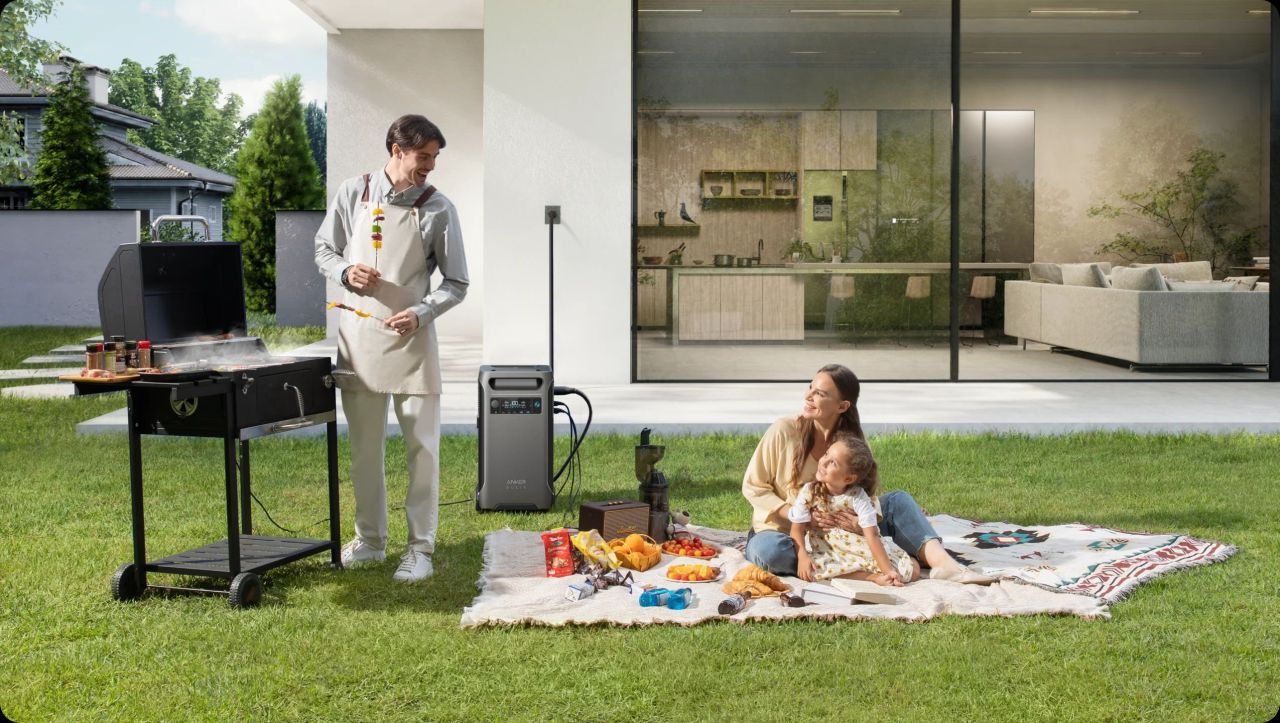
Anker has been widely known for its portable power banks for smartphones, and this applies to power stations for the home as well. If you are looking for a high-power capacity unit that is also movable, then Anker SOLIX F3800 might be the best option for you. Each battery delivers a maximum of 3.84kWh of power, while you can add up to six battery packs to expand the capacity to 26.9kWh. This power station handles both standard 120V and high-power 240V devices with up to 6,000W AC output. It can even charge your EV and you can also use it to power your entire RV with NEMA 14-50 or L14-30 ports. It supports superfast AC charging at 1800 watts that allows it to fully charge in under three hours. The F3800 is 132 pounds (60kg) and comes with wheels for moving around.
Our Take
If you need lots of power during a power outage or emergencies, this is the right option for you. It can also be helpful for RV owners. The wheels make it easier to move from one place to another despite its slightly heavier design.
What We Like:
- Expandable
- Mobile app connectivity
- Wheels & retractable handle
- Easy solar charging
- Dual-voltage support
What We Don’t Like:
- High cost
- Bulky
- Requires additional accessories
- Not designed for outdoor use
Battery Capacity: 3.84kWh | Battery Output: 6,000W | Expandable: 26.9kWh | Charging Time: 1.28 hours | Weight: 132.3 lbs(60kg) | Warranty: 5 years
Rating:
Amazon: 4.3 | Our Rating: 4.5
Pecron E1500LFP Portable Power Station
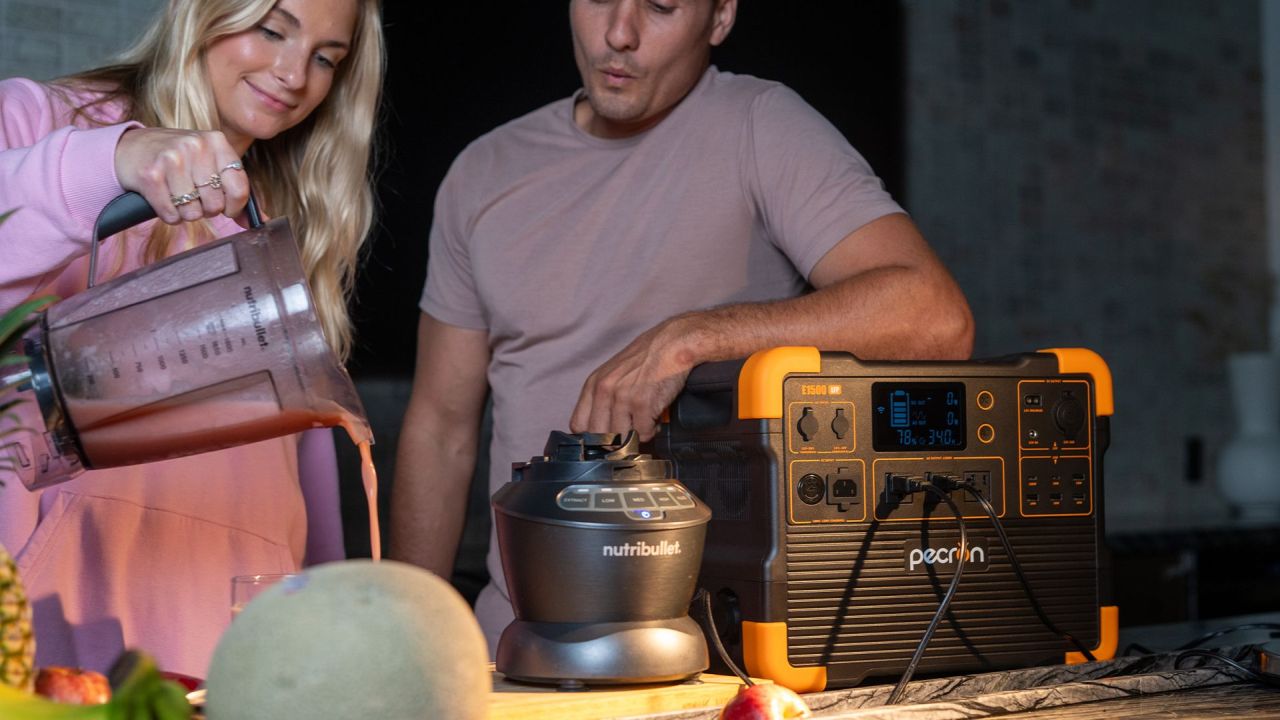
This portable power station features a 1536Wh LiFePO4 battery with over 3,500 charge cycles and delivers 2200W AC output (surge 4400W) that makes it suitable for both home backup and outdoor activities. It has 13 output ports, including AC, USB-C/PD, and DC ports to run multiple devices at once. The unit charges 80 percent in under an hour via AC, or fully in 1.8 hours. Other features like app connectivity, Wi-Fi remote access, UPS functionality, and expandability up to 7680Wh make it a great pick for those looking for a budget-friendly option with great power capacity. The onboard two fans generate a noticeable sound while it is in use or charging.
Our Take
If you want a powerful and easy-to-use power station at a low price, this is a great choice to consider. It offers affordability and expandability in a compact footprint. With UPS switching time of 8-20 ms, it can also be great to power sensitive devices like a CPAP, oxygen concentrator, or dialysis machine.
What We Like:
- Low cost
- Wi-Fi/Bluetooth enabled
- UPS mode
What We Don’t Like:
- High fan sound
Battery Capacity: 3.84kWh | Battery Output: 6,000W | Expandable: 26.9kWh | Charging Time: 1.8 hours | Weight: 40lbs(18.2kg) | Warranty: 2+3 years
Rating:
Amazon: 4.3 | Our Rating: 4.5
OUPES Mega 2
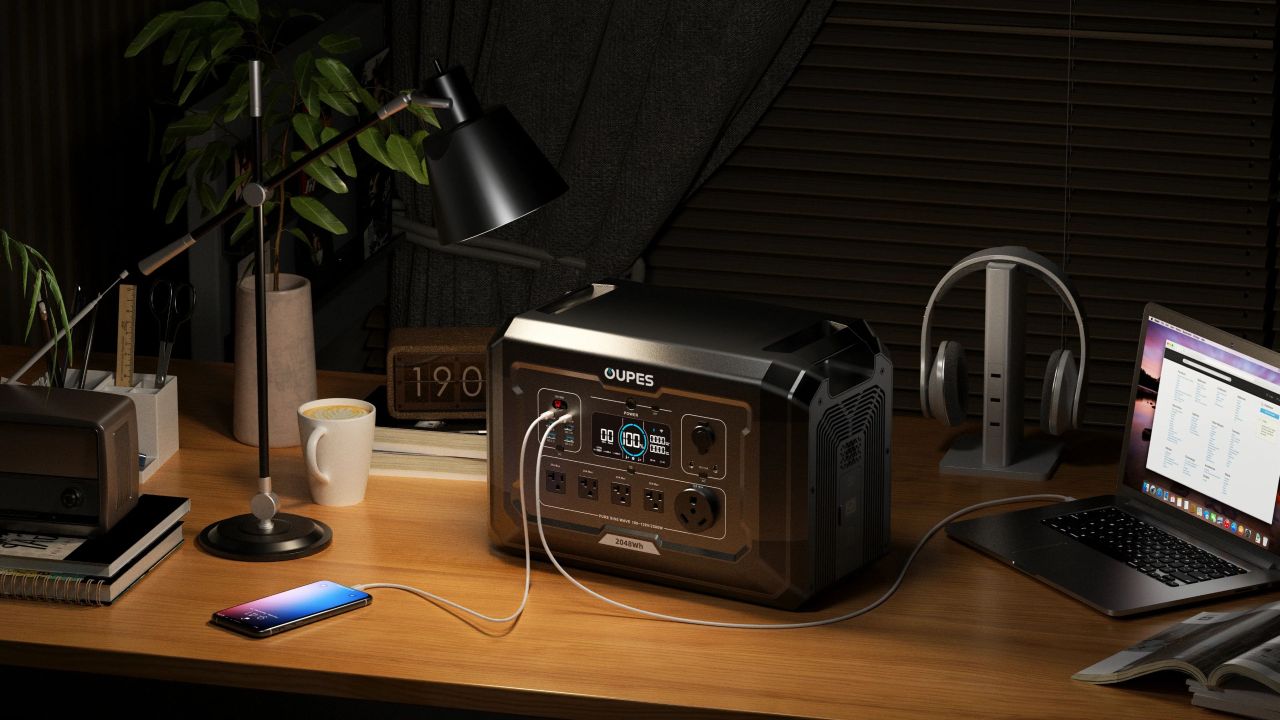
The real fun of storing backup energy comes when the energy itself is generated from solar panels. OUPES Mega 2 has a 2100W solar input that can help you get the most out of the solar panels. However, it can be recharged using a 1600W AC port in just 1.5 hours. With a 2048Wh base capacity and expandable to 10.24kWh Capacity, this power station can help power your devices and appliances in case of emergencies. It comes with a 2,500W pure sine wave inverter that is capable of surging up to 5,400W. It includes a 30-amp RV plug, four 120-volt AC outlets, two barrel connectors, a 12-volt car socket, a variety of USB ports, and an Anderson port. There’s also a handy smart app for remotely monitoring and controlling the unit.
Our Take
The OUPES Mega 2 is a great power station for its price point. It’s a good choice for light-duty use, emergency backup, and RV enthusiasts.
What We Like:
- Great pricing
- Expandable
- Supports pass-through charging
- Mobile app connectivity
- Compact and lightweight
What We Don’t Like:
- Underpowered 30-amp plug
- No flashlight
Battery Capacity: 2.048kWh | Battery Output: 2,500W | Expandable: 10.24kWh | Charging Time: 1.5 hours | Weight: 45.8lbs(20.7kg) | Warranty: 5 years
Rating:
Amazon: 4.3 | Our Rating: 4.2
EcoFlow Delta Pro Ultra
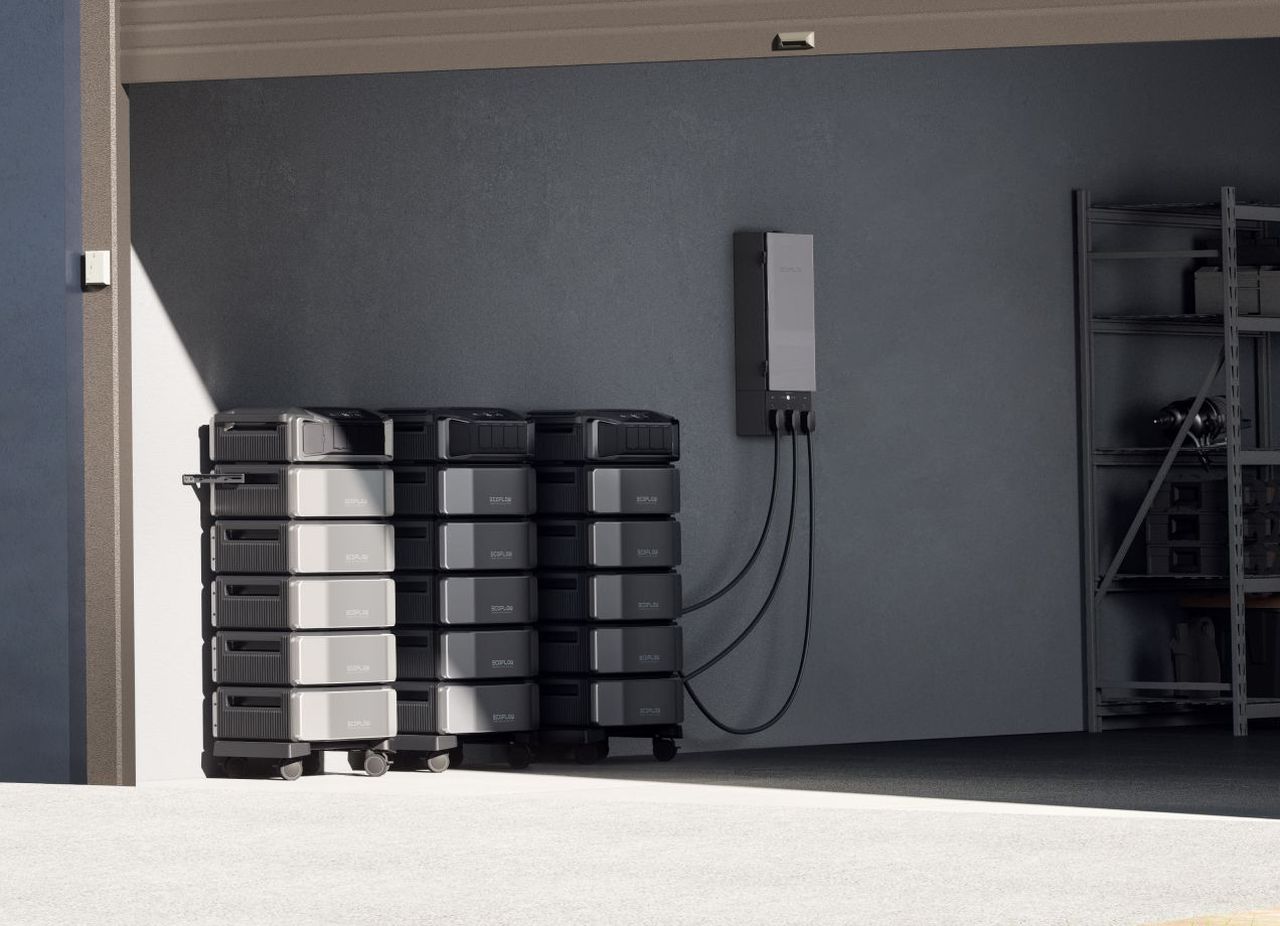
EcoFlow is one of the most popular home backup battery brands, and its Delta Pro Ultra model is perfect for its large energy use. It features a 6144Wh LFP battery that can be expanded up to 90kW. Its LiFePO4 battery charges in 2.5 hours with AC outlets (3000W), 1.5 hours with 7200W input through EV charging station, or solar charged in 2-5 hours with 4000W input. It supports 120V & 240V and has a 7200W output that lets you run almost any heavy household appliance.
Our Take
The EcoFlow DELTA Pro Ultra is a great home battery backup choice for those looking for storage that can be expanded step by step for with increase in energy usage over time.
What We Like:
- Modular design
- Low noise
- Smart Control
- UPS mode
- Comes with a trolley for carrying
What We Don’t Like:
- High cost
- Heavy
Battery Capacity: 6.144kWh | Battery Output: 7,200W | Expandable: 90kWh | Charging Time: 2.5 hours | Weight: 111.8lbs(50.7kg) | Warranty: 5 years
Rating:
Amazon: 4.3 | Our Rating: 4.5
Bluetti AC180T
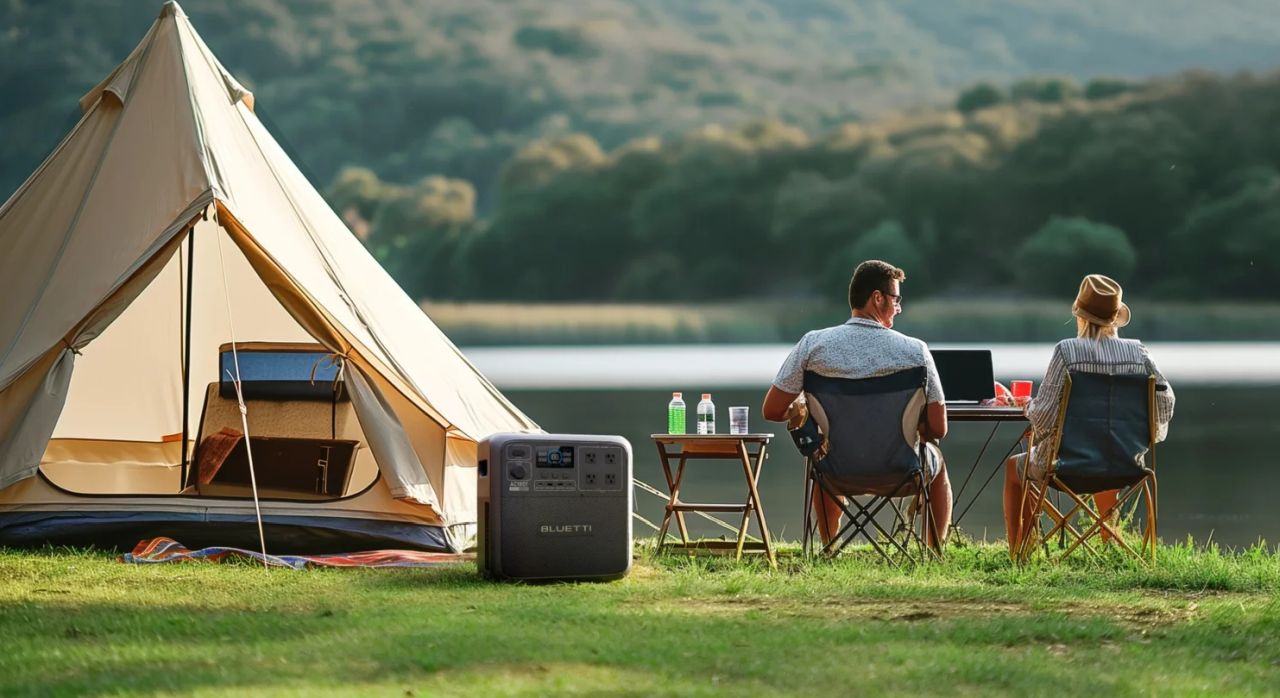
This BLUETTI AC180T portable power station comes with swappable batteries, which means you can instantly replace them for endless runtime and uninterrupted power. Each battery offers 716Wh, which totals to 1,432Wh capacity, good enough to power multiple household items, like a TV and small appliances, for multiple hours in case of a power outage. The portable power station has a 1,800W pure sine wave AC inverter (2,700W surge) and 1,440W AC charging. The unit supports solar charging up to 500W and includes four 120V AC outlets, a 12V car port, two USB-A ports, and two USB-C ports, one of which is a 100W Power Delivery port. Built with LiFePO4 battery technology, the AC180T comes with an intuitive LCD and app control.
Over Take
Its compact, user-friendly design makes it a great choice for emergencies or on-the-go power. Its swappable batteries make it easy to handle long outages or off-grid adventures without waiting for recharging. If you have a small family or kids and want to power multiple small appliances, this is the right option for you.
What We Like:
- Powerful inverter
- Fast charging
- Wireless charging top
What We Don’t Like:
- No option to charge individual batteries via solar
- Bluetooth app
Battery Capacity: 1.432kWh | Battery Output: 1,800W | Expandable: No | Charging Time: 1.1 hours | Weight: 58.4lbs(26.4kg) | Warranty: 5 years
Rating:
Amazon: 4.5 | Our Rating: 4.4
Jackery Explorer 1000 V2
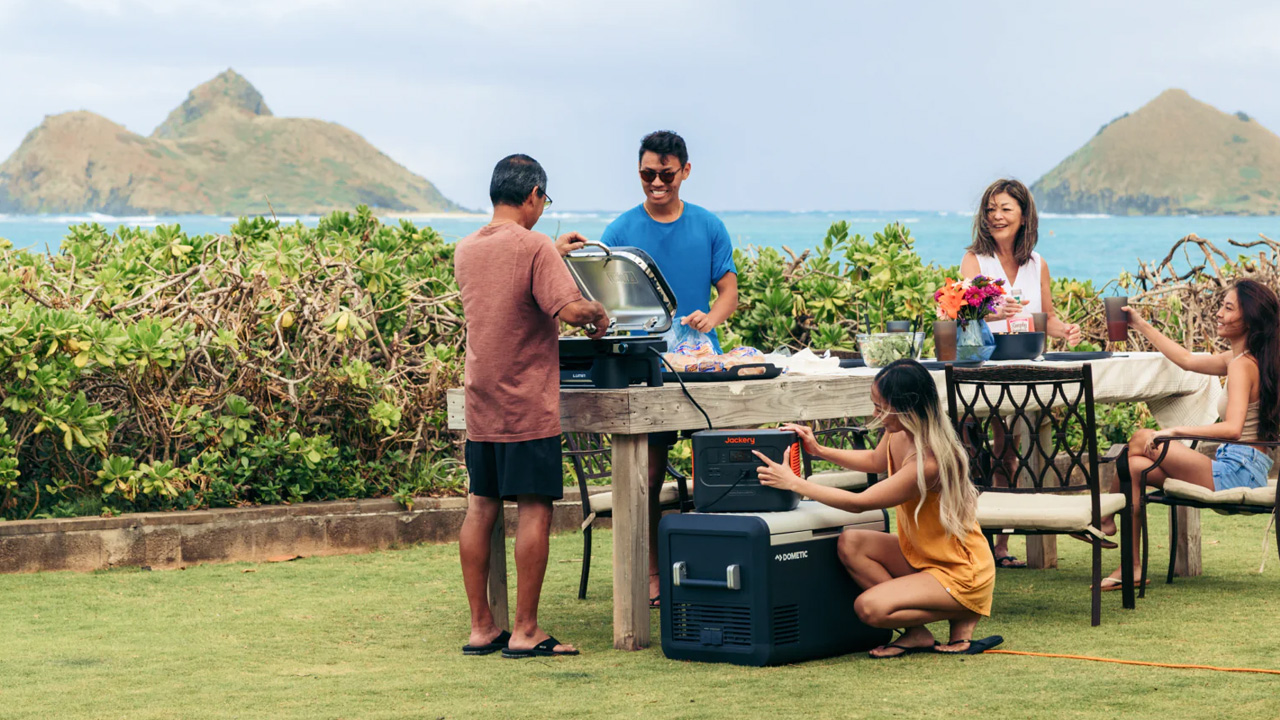
If you are looking for a lightweight portable power station with 1000Wh capacity, the Jackery Explorer 1000 V2 model is the right choice for you. Weighing around 23.8 lbs, this portable power station features a 1,070Wh LiFePO4 battery for up to 4,000 cycles. It delivers 1,500W (3,000W surge) pure sine wave AC output, and charges in just one hour via AC. The unit includes multiple AC, USB-A, and USB-C ports, and supports solar input up to 400W. It employs LiFePO4 cells, which were not present in the first-gen Explorer 1000.
Our Take
Its advanced battery management, rugged design, and foldable handle make it ideal for camping, emergencies, and backup power.
What We Like:
- Fast charging
- Quite charging mode
- Foldable handle
What We Don’t Like:
- Not expandable
- Limitations with solar charging
- Not weatherproof
- Many users have issues with the mobile app
Battery Capacity: 1.07kWh | Battery Output: 1,500W | Expandable: No | Charging Time: 1.7 hours | Weight: 23.8lbs(10.7kg) | Warranty: 3+2 years
Rating:
Amazon: 4.6 | Our Rating: 4.4
DJI Power 2000
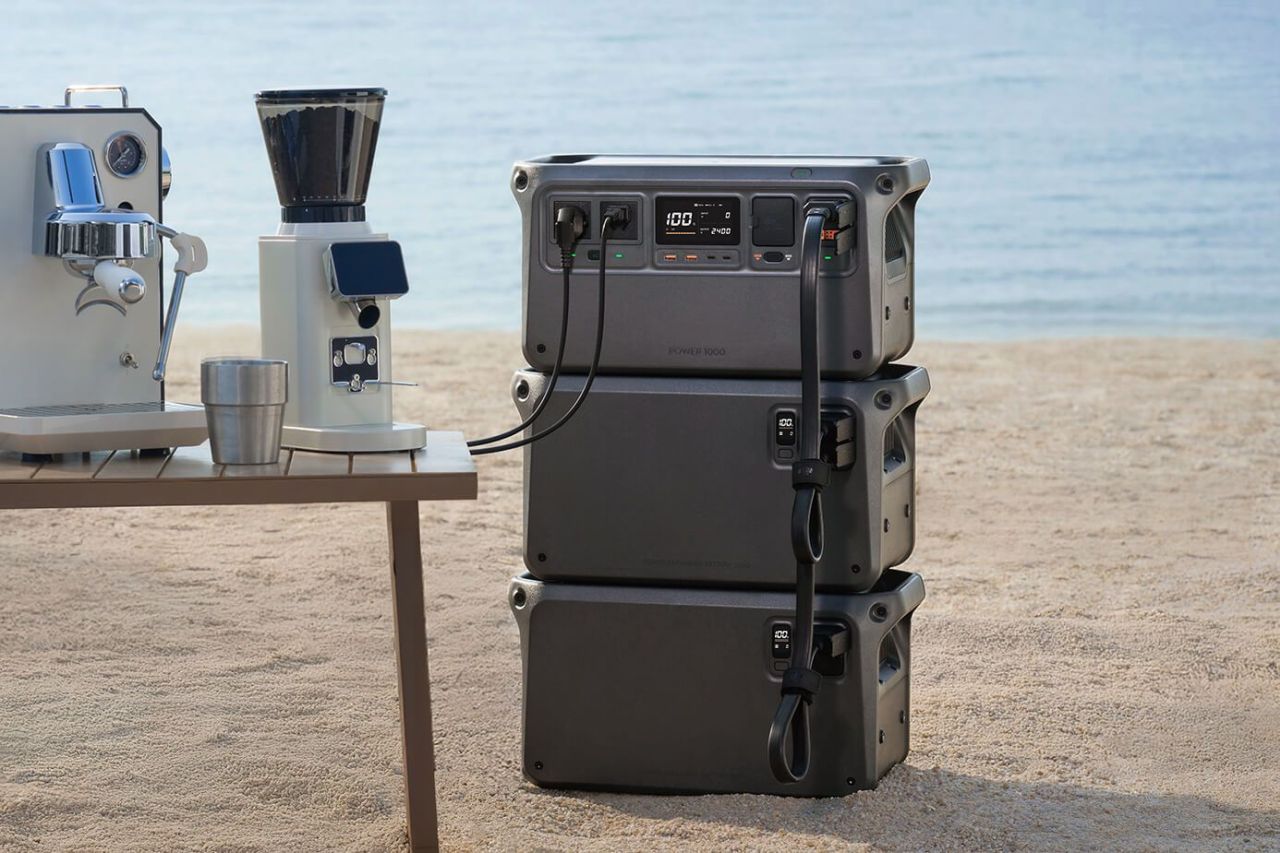
DJI is new in the battery backup space, but it has quickly grabbed the market in recent years. Its Power 2000 is a popular portable power station that offers a fast recharging time. It can be fully recharged in just 90 minutes and also supports car charging and solar input. With a 2048Wh LFP battery and a maximum continuous output of 3000W, it can run camera, computer and home refrigerator, microwave, power tools or a TV.
The unit features a total of 15 ports, including four AC outlets, four USB-A ports, and four USB-C ports, plus dedicated SDC drone ports and a DC car outlet. It can be expanded up to 22.5kWh, which is enough to power essential home devices for 4-6 days during blackouts. However, you cannot use the DJI Power 2000 until you pair it with the DJI Home app, which will surely take time to pair when you install it for the first time.
Our Take
If you have DJI drones, this might be the best choice for you as it supports fast-charging for select drones. Its quiet operation also makes it perfect for camping trips.
What We Like:
- Fast charging
- Low noise
- Ideal for drones
- Smart app
- Expandable
What We Don’t Like:
- Heavy to move
- High price
Battery Capacity: 2.048kWh | Battery Output: 3,000W | Expandable: 22.5kWh | Charging Time: 1.5 hours | Weight: 47.9lbs(21.7kg) | Warranty: 3+2 years
Rating:
Amazon: 4.7 | Our Rating: 4.5
EcoFlow RIVER 2
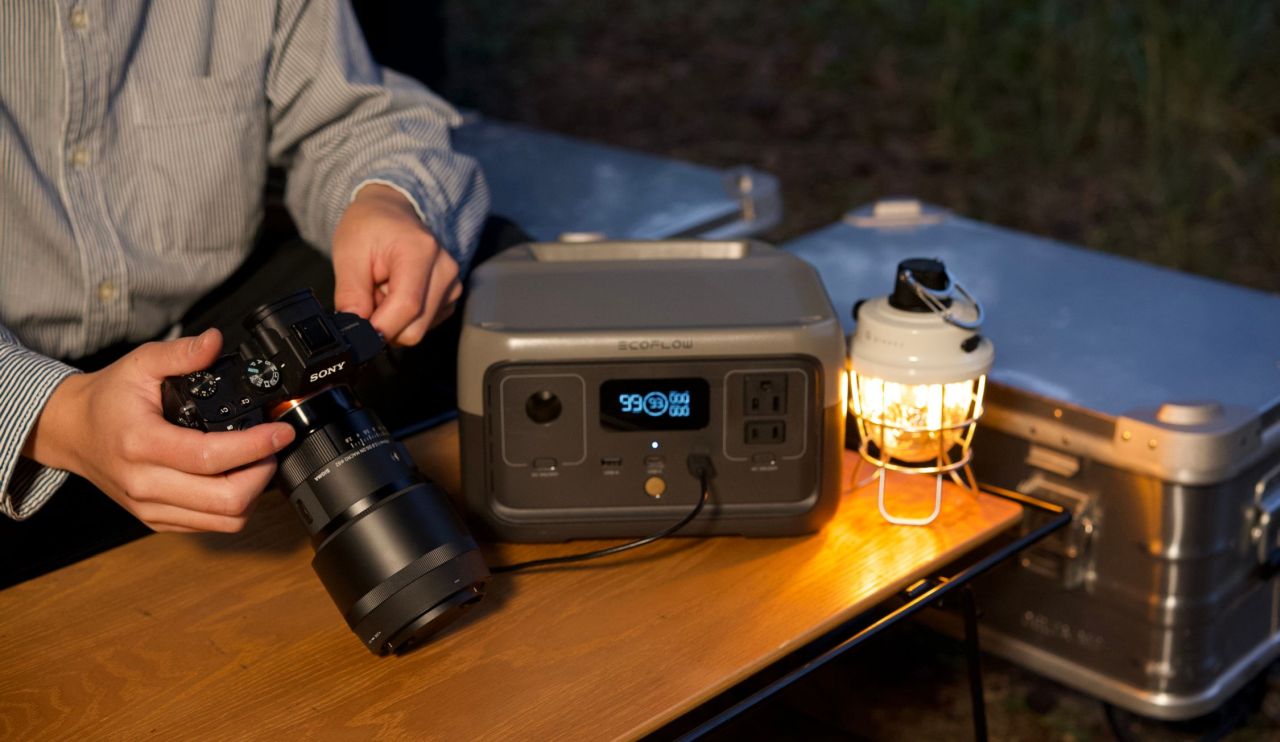
EcoFlow River 2 is a popular offering that entices people with its affordable pricing, power capacity, and smart features. It comes with a 256Wh LiFePO4 battery with up to 600W AC output that can run six essential appliances simultaneously. The power station can be fully recharged using an AC outlet in just one hour, while it takes 2.3 hours with 110W solar input. With a weight of only 7.7 lbs and a built-in handle, RIVER 2 is ideal for all off-grid adventures. This 3.5kg box has two USB-A ports, one USB-C port, along with a full-size AC and DC output. There is a 300-watt limit on the AC output, which means that you cannot power big fans, portable ovens, or heaters.
Our Take
It is ideal for camping, emergencies, or situations where you need a reliable power source for smaller devices. This a a fantastic choice if you are looking to buy the best portable power station under $200. It can fulfill your small energy needs in case of power outages.
What We Like:
- Compact and lightweight
- Fast charging
- Mobile app
What We Don’t Like:
- Low power capacity
- High noise
Battery Capacity: 256Wh | Battery Output: 600W | Expandable: No | Charging Time: 1 hour | Weight: 7.7lbs(3.5kg) | Warranty: 5 years
Rating:
Amazon: 4.3 | Our Rating: 4.3
Final Thoughts
Portable power stations for the home can power essential appliances during emergencies. We created our list of the best portable power stations for home with careful research and reviews. It is recommended to go through the things to consider section to get basic information about what features you have to look out for. You should always choose according to your particular energy needs and budget. To simplify your decision, we have also provided ratings and top pick suggestions, keeping in mind the main needs of most buyers.
FAQs About Portable Power Stations
A. Most portable power stations cannot run an entire house continuously, especially if you are trying to connect high-wattage appliances. They are suitable for powering essentials like fridges, modems, lights, and select electronics.
A. Yes, many portable power stations support pass-through charging, which means you can use connected devices while the unit itself is charging.
A. A portable power station may typically work up to 3 to 10 years, but it depends mainly on the battery type and usage patterns. Lithium-ion batteries usually last 3-5 years, while Lithium Iron Phosphate (LiFePO4) batteries can last 5-10 years if taken care of properly.
A. Check your appliance’s wattage rating and compare it to the power station’s maximum continuous output. Make sure your device’s power demands are lower than what the station can provide.
A. Many products come with safety features like built-in battery management systems (BMS) to regulate voltage and prevent overcharging, overload protection, temperature control, and surge protection against power spikes.
A. You only need a portable power station and its charger to begin. But if you are looking to use the station as a home backup tied to major circuits, you will require additional materials and professional installation.
Follow Homecrux on Google News!




